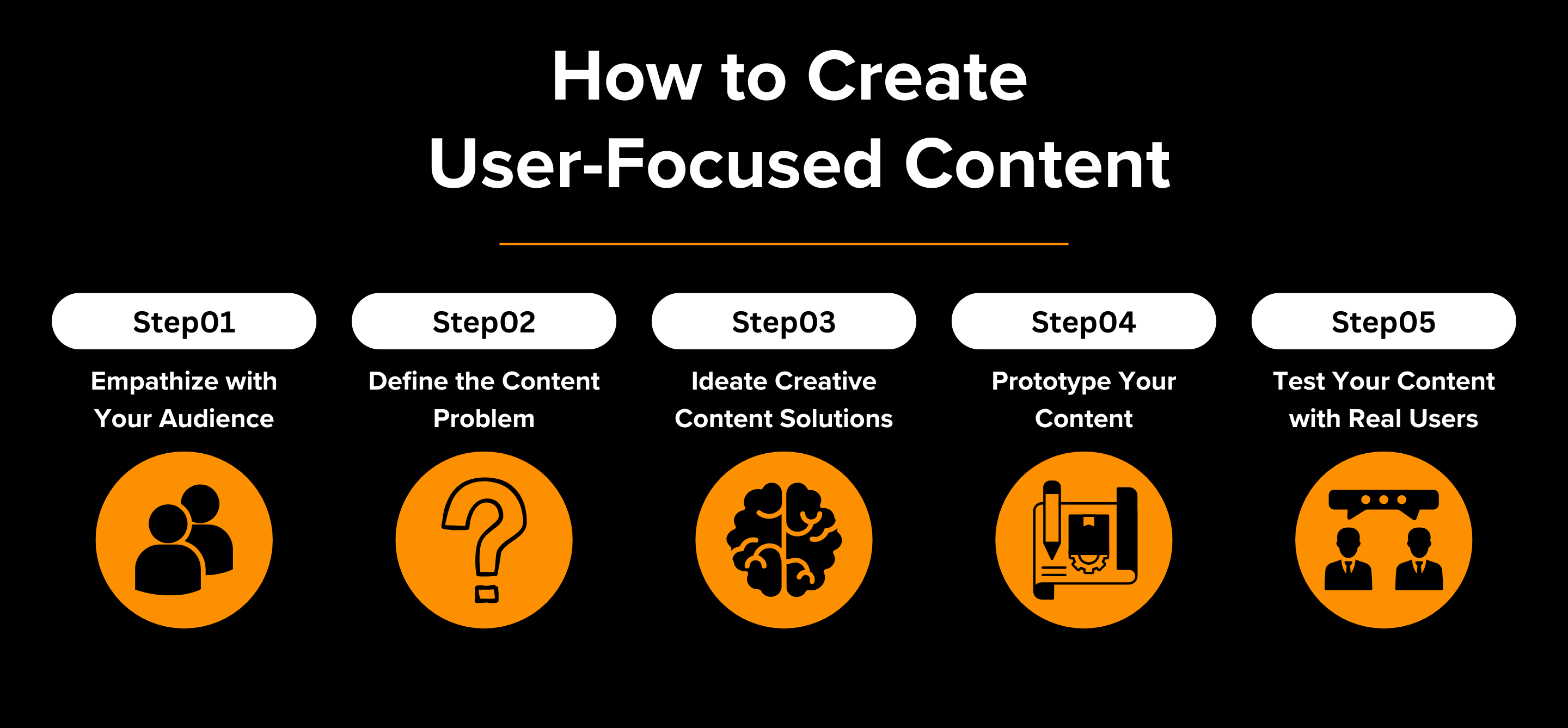Are you tired of creating content that doesn’t truly connect with your audience?
If yes, then design thinking might be the solution you’re looking for. In today’s fast-paced digital world, understanding your audience is key to boosting content experience. By applying design thinking principles, you can create more meaningful and user-focused content.
In this guide, we’ll explore a step-by-step process to help you master content creation using design thinking, highlighting common mistakes along the way.
Step 1: Empathize with Your Audience
The first step in design thinking is to empathize with your audience. Without knowing who you’re creating for, your content will likely miss the mark.
Common Mistake
Many creators assume they know what their audience wants without proper research.
Solution
Conduct user research through surveys, interviews, or analytics. Learn their behaviors, needs, and what questions they’re asking. Tools like BuzzSumo or Quora can help identify popular topics in your industry. Always engage with your customer service or sales teams to gather insights on the most frequent customer pain points.
Step 2: Define the Content Problem
Once you’ve gathered insights, it’s time to define the problem your content aims to solve.
Common Mistake
Jumping straight into content creation without a clear problem in mind often leads to unfocused material.
Solution
Use your research to distill the audience’s needs into a specific problem statement. For example, ask yourself, "How might we create blog posts that answer our audience’s biggest questions?" By defining the problem, you ensure your content addresses real concerns.
Step 3: Ideate Creative Content Solutions
Now comes the fun part—brainstorming. It’s important to generate a range of content ideas before settling on one.
Common Mistake
Sticking to the same formats (blogs, videos, etc.) without considering new approaches.
Solution
Invite team members from different departments to brainstorm. Consider experimenting with formats such as podcasts, infographics, or even interactive quizzes. Don’t dismiss ideas too early—this is a time for creativity. Building a diverse editorial calendar will help you reach your audience through multiple channels.
Step 4: Prototype Your Content
Next, take your top ideas and start building prototypes. Whether it’s a draft blog post or a sample social media campaign, this step is where you bring your concepts to life.
Common Mistake
Creating content without proper planning or testing.
Solution
Develop rough drafts or mockups of your content. For example, create a basic layout for a post or a script for a video. As IBM did with their technical documentation, refine your content structure and design before moving forward. Consider voting on the most promising ideas based on what will delight your audience.
Step 5: Test Your Content with Real Users
Testing is a crucial step that many skip. After all, how can you know if your content resonates without real feedback?
Common Mistake
Publishing content without testing its effectiveness.
Solution
Test different versions of your content with actual users. This can include sharing blog drafts with a small group of readers or testing various headlines and formats. Gather feedback and make adjustments accordingly. As seen with IBM’s approach, testing helped reduce support calls by 75% and improve user satisfaction.

Mastering content creation using design thinking is an iterative process that centers around your audience. By following these steps—empathizing, defining, ideating, prototyping, and testing—you can create content that not only meets your audience’s needs but also elevates their overall experience. Remember, design thinking is all about continuous learning and improvement.
So, are you ready to take your content creation to the next level? Start applying these steps today and watch your content experience soar!
Author 
The fastest way to build digital experiences. We empower businesses to convert PDFs, presentations and other content into interactive experiences & webpages with instant branding, analytics & more.